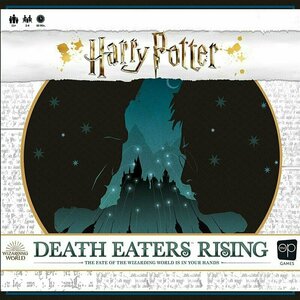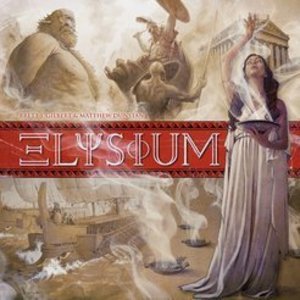Purple Phoenix Games (2266 KP) rated Harry Potter: Death Eaters Rising in Tabletop Games
Dec 3, 2020
Harry Potter: Death Eaters Rising is a game utilizing the Rising system of games (which also includes Batman, Star Wars, and SpongeBob Squarepants as of now) for two to four players. It is a cooperative game where players will take charge of one of the three factions: Dumbledore’s Army, Hogwarts, or Order of the Phoenix in order to defeat Voldemort and his Death Eater cronies. Though Voldemort will be menacing players throughout the game, the players will not be able to attack him directly until about half way through the game. Can you survive long enough to battle the big bad?
DISCLAIMER: We were provided a copy of this game for the purposes of this review. This is a retail copy of the game, so what you see in these photos is exactly what would be received in your box. I do not intend to cover every single rule included in the rulebook, but will describe the overall game flow and major rule set so that our readers may get a sense of how the game plays. For more in depth rules, you may purchase a copy online or from your FLGS. -T
To setup, follow the instructions in the rulebook, but generally the central board will have the large painted Voldemort “mini(?)” and three areas that hold Place cards: Hogwarts, Ministry of Magic, and Diagon Alley. Players will be given one Leader card in their chosen faction (obviously Order of the Phoenix is best) to begin the game. Set aside the damage counters, corruption gem tokens, and Spell tokens in their own piles. Shuffle the main deck of character cards, reveal and place three per Place and then insert the Voldemort card somewhere near half-way into the shuffled deck. The game may now begin.
On a player’s turn they must complete the following steps: 1. Travel to a Location, 2. Roll Voldemort Die and resolve actions, 3. Roll, assign, and resolve Wizard dice, and 4. End Turn. After taking these actions it will be the next player’s turn.
To Travel to a Location, the active player will place their faction-matching Mission token upon one of the Places on the board. This is the Place that the active player may now be able to recruit Wizards from and also attack enemies.
Once at a Location, the active player will Roll Voldemort Die and resolve actions thenceforth. The game affords players a large green Voldemort Die to be rolled. Upon the faces are sides that instruct players to turn the Voldemort mini Left or Right one Place and attack all Wizards there (including all Wizards on a player’s team if Voldemort is now in their Location). Two faces will also show the Dark Mark. When this face is rolled Voldemort does not move, but will attack all Wizards at his current Place (by placing damage counters on the card) as well as activating ALL Death Eater Dark Mark abilities. Not all Death Eaters will have Dark Mark abilities, but when they activate, they can be deadly.
Now that Voldemort has had his fun, the active player will Roll, assign, and resolve Wizard dice. Players will have in front of them faction cards that indicate how many and of which color dice to be rolled on a turn. These dice may be added to or otherwise altered as a result of recruited Wizards’ special abilities as well. Once a player takes the appropriate dice to be rolled, they must roll them and begin assigning faces to Wizards for recruitment, Death Eaters for damage, or other abilities on team cards. Recruiting more Wizards to a player’s team or damaging Death Eaters is how the game progresses because each time a card is recruited or defeated it is removed from the main board and a new card replaces it. As long as at least one die is removed from the player’s pool each time the dice are rolled the player may continue rolling to match symbols needed.
To End Turn, the active player will add any recruited Wizards to their team, discard any defeated Death Eaters, Wizards, or Places, and retrieve their Mission token to be used on the next turn.
Play continues in this fashion of taking turns through the four steps until the Voldemort card is drawn. He then comes into play as an enemy that may be attacked like normal. Players win when they defeat enough Death Eaters and Voldemort, but can lose if the players allow a Place to be completely corrupted (usually by Death Eater card abilities), allowing four Places to be corrupted, if too many Wizards have been defeated per number of players, or any player has all their Wizards defeated from their team.
Components. This game includes a lot of components of varying style and materials. The cards are all very glossy (meh) and feature headshots of the characters mostly. The board is three pieces fit together like a pizza and is great. The damage counters are little translucent red cubes, and the corruption gem tokens are also translucent gems but gray in color. The best components in the game are by far the Voldemort, well, statue and all the dice. The Voldemort piece is incredible, and pre-painted. The stance he is taking is formidable and somewhat intimidating when he’s pointing his wand right at you. The dice have been upgraded to a matte finish (as opposed to yucky polished finish) and feature some great inking. The one negative I have to say is also about the dice: I believe that the faces sometimes can be confusing because the icons are more detailed than is necessary. While some would argue that detailed dice are better than merely serviceable dice, I would much rather see a sword on a face and know it’s a sword than to look at a die face and wonder what I am looking at exactly. In any case, that’s my opinion and yours may be different. Let’s still be friends.
So overall this is a big upgrade over the Thanos version of a Rising game for several key reasons. In Thanos I always felt like every turn could lose the game for us, and Thanos seemed to gain the Infinity Stones too quickly for my taste. In this version, you know you have half a deck before you are able to even fight Voldemort, so being able to tackle his minions until then seems more surmountable. The dice have been upgraded, and the Voldemort die is wonderful and easy to read. That was an issue I had with Thanos: his die was hard to read and the colors were not distinct enough. Not a factor in this version at all. I also feel that this version has much more faction-dependency and interplay. What I mean is that an Order of the Phoenix card may require a player to also have a Dumbledore’s Army card on the team in order to unlock access to their special ability. I like that. I like a well-balanced team, though my first game saw me recruit eight Order of the Phoenix cards and one Dumbledore’s Army card. We won, but I felt bad.
So it’s no surprise that I love this game. I find it better and easier to learn/play than the Thanos version. I like the components a whole lot more. I like the interplay between the factions more. I am sad that I prefer Marvel to Harry Potter, but I do not dislike Harry Potter, let it be known. And I do enjoy this version much more. Purple Phoenix Games gives this one a triumphant 10 / 12. My wife and I truly love it and can’t wait to play it again very soon. If you are looking for a good Rising game, I certainly recommend you look at Harry Potter: Death Eaters Rising. It’s a guaranteed hit if you or a loved one is a Harry Potter fan. For sure. It’s brilliant.
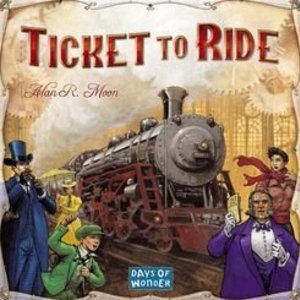
Ticket to Ride
Tabletop Game
With elegantly simple gameplay, Ticket to Ride can be learned in under 15 minutes, while providing...
Boardgames
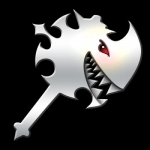
Munchkin Level Counter
Entertainment
App
Now all you iPhone-using munchkins can get an unfair, yet completely legal, advantage when you play...
Purple Phoenix Games (2266 KP) rated Battlestar Galactica: The Board Game in Tabletop Games
Feb 23, 2021
Disclaimer: There are several expansions for Battlestar Galactica. This review will not take any expansions into account, and will focus solely on the base game. Also, I do not intend to rehash the entire rulebook in this review, but rather provide an overview of the gameplay. – L
To setup for a game, follow the instructions in the rulebook – there are simply too many to detail here. Each player selects a Character, and receives the corresponding Character sheet and tokens. Based on the Characters selected, one player will receive the President title and another the Admiral title. Depending on how many players there are, a Loyalty deck is created and each player is secretly dealt a Loyalty card – either “You are not a Cylon” or “You Are a Cylon.” The Loyalty cards determine how you will play the game: human players win if they complete their given objective, and Cylon players win if they prevent the humans from completing their objective (by depleting resources, successfully invading the Galactica, or destroying the Galactica itself). The game is now ready to begin!
Battlestar Galactica is played over a series of rounds in which players take turns moving, performing actions, playing/drawing cards, etc. until either the human players or Cylon players have won the game. A player’s turn consists of 4 main steps, carried out in the following order: Receive Skills, Movement, Action, and Crisis. To begin your turn, you will draw Skill cards according to the skills listed on your Character sheet. Skill cards can be used to address crises or can provide special abilities. In the next step, Movement, you may move your Character to a different location/ship (all provide special actions). After moving, you will then choose one Action to perform – either listed on your current location, Character sheet, by using a Skill card, or you may choose to perform no action at all. Once you have completed your action, draw the top card of the Crisis deck, and resolve it. Depending on the Crisis card drawn, you may need to then Activate Cylon Ships or Prepare for Jump (more on this in a bit). If neither of those are listed on the Crisis card, then your turn ends and play moves to the next player.
I know that seems like a lot, but each turn of Battlestar Galactica can essentially be broken down into 2 phases: Player Actions and Space Combat. The first phase, Player Actions, is what is detailed above – drawing Skills, Movement, Actions, and drawing Crisis cards. This phase is where players make progress towards their objectives. Certain Actions or Skill cards earn specific rewards necessary to move forward in the game. Crisis cards can consist of Cylon attacks (activating and adding new Cylon ships to the board), Skill checks (all players secretly contribute Skill cards to either aid or sabotage the Skill check), or Events (resolved immediately). The second phase of play, Space Combat, takes place after the Crisis card has been drawn on each turn. Certain Crisis cards will show icons of Cylon ships, indicating that they are to be activated for combat, launched into play, or moved around the Galactica. Cylon ships will act based upon an action hierarchy, detailed in the rulebook. If the drawn Crisis card has the “Prepare for Jump” icon, move the fleet token forward on the Jump Preparation track, jumping the fleet if necessary (and moving the humans closer to their game-end objective). I have purposefully left out some elements of play, for you to discover on your own, or because they just provide intricate detail for the steps and actions described above. When the game-end objective is met by either the human players or the Cylons, the game is over and that respective race wins the game!
To say that there is a lot going on in Battlestar Galactica is quite an understatement. There are several rules and game elements that I did not touch upon, just because if I did then this review would be too long. With so many elements in play and of which to keep track, this game is not exactly for the faint of heart. The gameplay is very involved and requires a good amount of strategy – this is definitely a game that could take up most of a game night to play. That being said, I love this game. There is a lot going on, but that just provides players with so many different strategies to complete their objectives. Maybe you want to focus on dealing with Skill checks or Crisis cards, but maybe you’d rather think offensively and be prepared for any potential Space Combat. Can you help the crew efficiently manage its resources, or position its fleet to protect the Galactica itself? Your strategy must be adaptable at a moment’s notice to help you complete your objective….whatever it may be.
Speaking of which, the fact that there may or may not be secret Cylon players attempting to disrupt your plans really takes a hidden identity game to the next level. Cylons want to sabotage the humans, but in subtle ways as to not be found out – because once a Cylon is revealed, the humans can target and hinder their turns. Can you convince the humans that your previous actions were honest mistakes, or will they catch on that you are trying to undermine their efforts? The elements of deception and bluffing in this regard make the game much more immersive and make it feel realistic – there is a traitor among us and we have to find them, while also completing our own objectives. You really start to question who to trust and how your own actions can be perceived by your fellow players. There have been times, when playing this game, that we have taken breaks for dinner or snacks, and all players pocketed their cards rather than leave them on the table, vulnerable to sneaky opponents. Battlestar Galactica is definitely engaging for all players, and for such an involved and lengthy game, that is something to be applauded.
Let’s touch on components for a minute. The production quality of this game is great. The cardboard elements, including resource dials, are thick and sturdy. The cards and Character sheets are quality, colorful, and feel good in hand. And the plastic ships are well made too. The artwork consists mainly of screen caps from the TV show (which I admittedly have not yet seen…) but the theme and cohesiveness of the components makes for an immersive and engaging game overall.
In general, I am not a person who enjoys hidden identity games – simply because I am a bad liar and get found out almost immediately. However, the way this mechanic is incorporated into Battlestar Galactica makes it more a game of strategy than simple deception. And games of strategy are what I truly love. Managing your hand of Skill cards to best overcome Crisis cards, thinking tactically about how to deploy your fleet and battle Cylon ships, and having to determine who among the crew can actually be trusted keeps all players engaged across the board. Nobody can just sit back and relax, every single turn can drastically affect the outcome of the game. Everyone is in it, and that is what I love about this game. Purple Phoenix Games gives it a 11 / 12. This game has been out of print for a while now, but if you ever get a chance to play – jump on it! You don’t have to know the show to enjoy the game. Trust me, I haven’t seen a single episode yet.
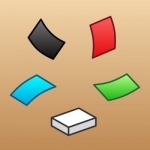
Decked Builder
Games and Entertainment
App
Decked Builder is the premium deck building app for Magic the Gathering -- providing a sleek user...
Rikki Hammond (33 KP) rated Dominant Species in Tabletop Games
Jun 12, 2019 (Updated Jun 12, 2019)
Players choose one of many different types of species in the game, and try to become the dominant species of the game by expanding their species across the different hexagonal tiles on the board, through migrating, reproducing, and attacking other animals. If a player has more animals on a tile than other players, they are considered the dominant species of that tile and can therefore gain victory points from doing so.
Turns are determined by players placing their action pawns on different spaces on the grid to the right of the board. Once everyone has placed their pawns on the grid, actions are then worked from the top of the grid to the bottom. These actions include, but are not limoted to moving your species to another tile, attacking another species, or picking up an event card to use later. The game ends once this stack of event cards runs out, and final scoring takes place.
Each species starts out with a certain traits which means they are suited to a certain type of terrain. You can use one of your actions to gain different traits and therefore allows you to expand your species into different terrain tiles. The event cards are also useful in that they give you special abilities or can change the game in some way. This could be having your species migrate more than once in a turn, to removing every other species from your own tiles.
I like the way the turn mechanism works as it gives each player a little bit of freedom as to where they can place their pawns, and how soon they want their turn to be taken. There are a finite amount of spaces on each place of the grid so if you're action is taken up by other players before you get to it then that's just tough luck. I also like that the different species are slightly different and so gives the game a slight bit of replayability.
These are all the positives that I can give this game however. The game in general is just incredibly dull and boring to look at. Each species is differentiated by different coloured cubes and cones on the board. Take the player boards away and this game could literally be about anything you want.
The game also goes on for far too long especially at higher player counts, and especially if people don't quickly pick up those event cards, as that is the only way the game will end.
The game can also be horrendously unfair to a player. If you make one or two wrong judgements at the start of the game it can be nigh on impossible to come back from being in last place which to me, does not sound fun at all.
Personally I do not recommend dominant species as a game and I do think there are much better ones out there.
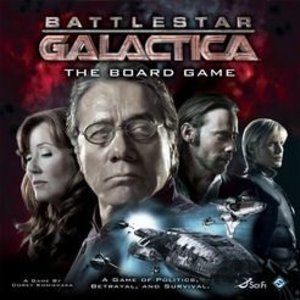
Battlestar Galactica: The Board Game
Tabletop Game
Battlestar Galactica: The Board Game is an exciting game of mistrust, intrigue, and the struggle for...
Purple Phoenix Games (2266 KP) rated Matryoshka in Tabletop Games
Apr 8, 2022
Matryoshka is a card game of hand management and set collection in which players are antique collectors attempting to gather complete sets of valuable Matryoshka dolls. Over the course of 4 rounds, players will be trading (in a sort of auction/bidding way) cards in their attempts to collect different sets of numerically ascending Matryoshka dolls. To setup for a game, you will first create the game deck. Depending on the player count, you will use a specific number of Matryoshka sets for the game – each set ranging from values 1-7. Shuffle the deck and deal 6 cards to each player, placing the remaining cards in the middle of the play area in a face-down draw deck. Players will then select 2 cards from their hand to place in their Display (tableau), organized as described in the rules. Cards in your display are visible to all players, and provide information as to what cards you have, and what cards you may be looking for. So deciding which cards to Display is part of your strategy. Select a starting player, and the game is ready to begin! Pictured below is the setup for a four-player game.
Each round is consists of 3 phases: Draw, Exchange, and Display. To begin the round, all players will draw 2 new cards from the deck. The Exchange phase is played in turns, beginning with the starting player as the active player. The active player will select one card from their hand to be placed face-up in the middle of the table. This is the card that is up for trade. All other players must then choose one card from their hands to be offered in exchange. Players keep their offer cards hidden, and the active player will secretly look at all offer cards. The active player then chooses one of the offer cards to take into their hand, and the player whose card was chosen takes the active player’s face-up card. All other players take their offer cards back into their own hand. Play then moves clock-wise, beginning another Exchange with a new active player.
When all players have had the opportunity to be the active player, the game moves to the Display phase. Players take all cards from their Display into their hand, and will then create a new Display. As the game rounds progress, the number of cards in each Display increases. To start the game, all players Display 2 cards. After the first round, the Display will have 4 cards, then 6, 8, and finally 13 to end the game. Again, cards in your Display are visible to all players, and that information could be used strategically when Exchanging cards in the second game phase. After the fourth and final round, players will have a total of 13 cards in their Display. Each Display is now scored, earning points for consecutive cards per row as well as sets of the same size of doll. The player with the highest total score is the winner of the game!
I should probably start by saying that I’m a sucker for set collection. So when I stumbled across Matryoshka, the theme drew me in and the set collection mechanic prompted me to hit ‘Add to Cart.’ And I have to say that I am loving this game. One major element that I like about Matryoshka is the simplicity of the gameplay. Draw 2 cards each round, offer cards from your hand in Exchange for others, create Displays of your sets. Easy as pie.
What really takes this game above and beyond for me are the strategic elements. Deciding which cards to Display at the end of each round is a major strategy point of the game. You have to be careful with which cards you choose to Display, because they are visible to all players. So maybe you’ve got a set of 5 consecutive cards, but do you really want your opponents to know that? Is it better to only Display a couple and use other sets to finish your Display? Or maybe you do want people to know you’re gunning for that set, as it may prompt them to offer any of those cards from their hand, for which you would pay a pretty price. You scratch my back, I’ll scratch yours, right? Along with that comes the negotiation tactic. During every Exchange, players are allowed to try to influence the active player for certain trades. Take my card now and I’ll owe you a favor later sort of thing. It’s neat to see what strategies players will try with each passing round.
ALSO it pays to pay careful attention to all opponents each round. When creating your Display at the end of every round, you do not have to use the same cards as in your last Display. So you can strategize to bait opponents to giving you cards you want, or to try and keep your chosen sets secret. That being said, paying attention to opposing Displays can be a good tactic. Maybe your neighbor just had a consecutive run of 3 cards in their Display, but now are choosing to only Display 1 of those cards – just because you can’t see the others, doesn’t mean they’re not necessarily there. So changing up Displays can be a way to maybe trick your opponents into thinking you do or do not have specific cards. If you keep a careful eye out, you may be able to deduce what everyone is hiding…
A quick note on components – this game is a stack of cards in a small magnetically-closing box. The artwork is thematic and unique, the rules and scoring aids are understandable, and the box itself is nice and sturdy. The cards are not the most high-quality I’ve seen in games, but as long as my players are gentle, that shouldn’t be a problem in the long run.
So all in all, I think you can tell that I love Matryoshka. The gameplay is simple and fast, yet the strategic options really get you thinking and perhaps second-guessing every Exchange that is made. I really like the element of changing Displays at the end of every round, as it allows players to adapt their strategy for the coming round. I wasn’t really sure what to expect when I picked up this game, but I was pleasantly surprised. It’s one that I’m definitely happy to have, and can see myself pulling it out often for a quick, yet strategic game between some of the bigger games out there. To bring back my analogy from my intro (yep, I’m committed to this joke), I would say that Matryoshka is nearly as satisfying as playing with a physical set of nesting dolls. If you’re looking for something light yet engaging, I would definitely recommend picking this one up. Purple Phoenix Games gives Matryoshka a nestled 5 / 6.
Purple Phoenix Games (2266 KP) rated Elysium in Tabletop Games
Aug 3, 2021
Elysium is a set collection card drafting game for two to four players. Each player will be attempting to complete the greatest collection of Legends written and subsequently transferred to their Elysium (Ancient Grecian version of heaven) for Victory Points. Whomever weaves the greatest Legendary tapestry will emerge victorious and really have a story to tell.
To setup, follow the instructions in the rulebook, but a three player game should look similar to what is pictured above. Players will receive their own player board, starting VP tokens and gold, and a set of columns. Cards from five different Grecian families will be shuffled and displayed in The Agora (middle of the board and the place to draft the cards). Once setup the game may begin.
Elysium is played over five Epochs (rounds) and each Epoch is divided into four phases. Phase I is Awakening, which is simply setting up The Agora for the new Epoch by removing all existing cards there and revealing more. Phase II is Actions, where players will be using their columns to draft cards from The Agora (as long as the color of column matches one of the icons on the card) and taking at least one Quest tile (also denotes player order for the next Epoch). Phase III is Writing the Legends, where players will redistribute the player order discs, receive gold and VP per their Quest tile, and transfer any cards from their Domain – active holding area – to their Elysium for VP at game end. Phase IV is End of Epoch, where players will perform basic cleanup tasks to prepare for the next Epoch of play. Play will continue in this fashion until the end of the fifth Epoch and players tally their final VP to determine the greatest Legend-crafter in all the land!
I know this is a VERY brief summary of what is done during the game, but Elysium has many card effects and combos to consider that I just cannot detail here for fear of readers falling asleep or my fingers falling off.
Components. Elysium has simply an incredible aesthetic. The non-card components certainly radiate ancient times and the art on the cards is breathtaking. Every piece is very high quality, which is something I have grown to expect from Space Cowboys games. The columns are fun to hold and move, and as a whole is just visually stunning. I love playing this game and seeing it all out on the table.
Obviously we place our ratings on the very first graphic you see so it is no surprise by the time you read down here, but I love Elysium. Like I mentioned in my open it was in my Top 10 for quite a while, and for very good reasons. First, I love games that simply LOOK good. Is that shallow? Maybe, but it’s what I like. Second, I love the card interplay and combo potential in Elysium. Chaining together cards to build small engines is always fun and provides so much replayability by never really being able to experience every card combo in the box. Finally, it has great components and a theme that speaks to me and my personal interests. It feels like a game that was meant to be played by me specifically. When you find a game like that you have to give it high ratings.
So if you are at all like me and enjoy games with a great theme, excellent art and components, and intriguing replayability, then certainly grab a copy of Elysium. Purple Phoenix Games gives it an Olympus-sized 11 / 12. So many Ancient Greece themed games exist and Elysium is simply one of the best.
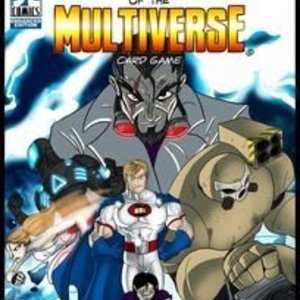
Sentinels of the Multiverse
Tabletop Game
A mad scientist holds the world hostage with his terrifying inventions. An alien warlord from a far...
